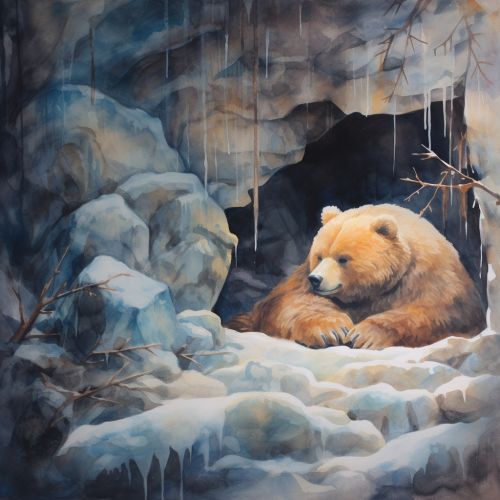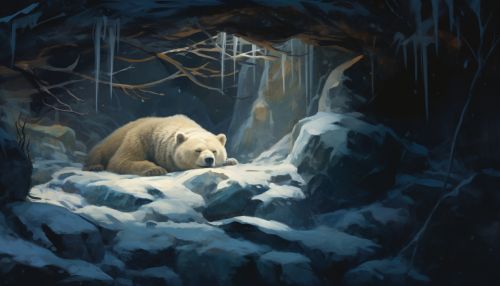The Biological Mechanisms of Animal Hibernation
Introduction
Hibernation is a state of inactivity and metabolic depression in animals, characterized by lower body temperature, slower breathing, and lower metabolic rate. Hibernating animals conserve energy, especially during winter when food is short supply, or during periods of water shortage in hot weather. Hibernation is observed in a variety of animals including mammals such as bears and bats, birds like the common poorwill, and even in some reptiles and amphibians. This article delves into the biological mechanisms that underlie this fascinating survival strategy.


Physiological Changes During Hibernation
During hibernation, animals undergo a series of physiological changes. The most noticeable is a significant decrease in body temperature, often to just above the ambient temperature. This is known as hypothermia. The heart rate and breathing rate also slow down dramatically, a state known as bradycardia and bradypnea respectively. The metabolic rate drops to as low as 2% of the normal rate, allowing the animal to conserve energy.


Hibernation Triggers
Hibernation is typically triggered by external environmental factors such as decreasing temperature and availability of food, and internal signals such as changes in the animal's circadian rhythms and hormonal changes. The exact mechanisms of how these triggers induce hibernation are still not fully understood and are a subject of ongoing research.
Preparation for Hibernation
Before entering hibernation, animals undergo a period of hyperphagia, where they increase their food intake and store energy mostly in the form of body fat. This fat reserve serves as the primary source of energy during the hibernation period. Some animals also prepare a specific site for hibernation, known as a hibernaculum, which can be a burrow, cave, or hollow tree.


Torpor and Arousal
During hibernation, animals enter a state of torpor, a short-term hibernation that lasts for about a day. During torpor, the body temperature and metabolic rate drop, but not as dramatically as in true hibernation. Animals in torpor can awaken quickly, a trait that can be beneficial if they are threatened by predators or need to feed.
Periodically, hibernating animals will arouse from their deep hibernation state. These arousal periods, which may last for a few hours to a couple of days, are characterized by a rapid increase in body temperature and metabolic rate. The reason for these arousal periods is not fully understood, but it is believed that they may serve to restore body functions that are suppressed during hibernation, such as immune function.


Hibernation and Survival
Hibernation is a survival strategy that allows animals to conserve energy during periods of low food availability. By slowing their metabolic rate and reducing their body temperature, hibernating animals can survive for months on their stored body fat. This strategy is particularly beneficial for animals that live in environments with harsh winters, where food is scarce and the temperatures are too low for normal physiological functions.
Conclusion
Hibernation is a fascinating biological phenomenon that allows animals to survive in harsh environmental conditions. The biological mechanisms that underlie hibernation, including the physiological changes, the triggers, and the processes of torpor and arousal, are complex and not fully understood. Further research into these mechanisms could provide insights into human health and disease, and could have applications in fields such as medicine and space travel.


